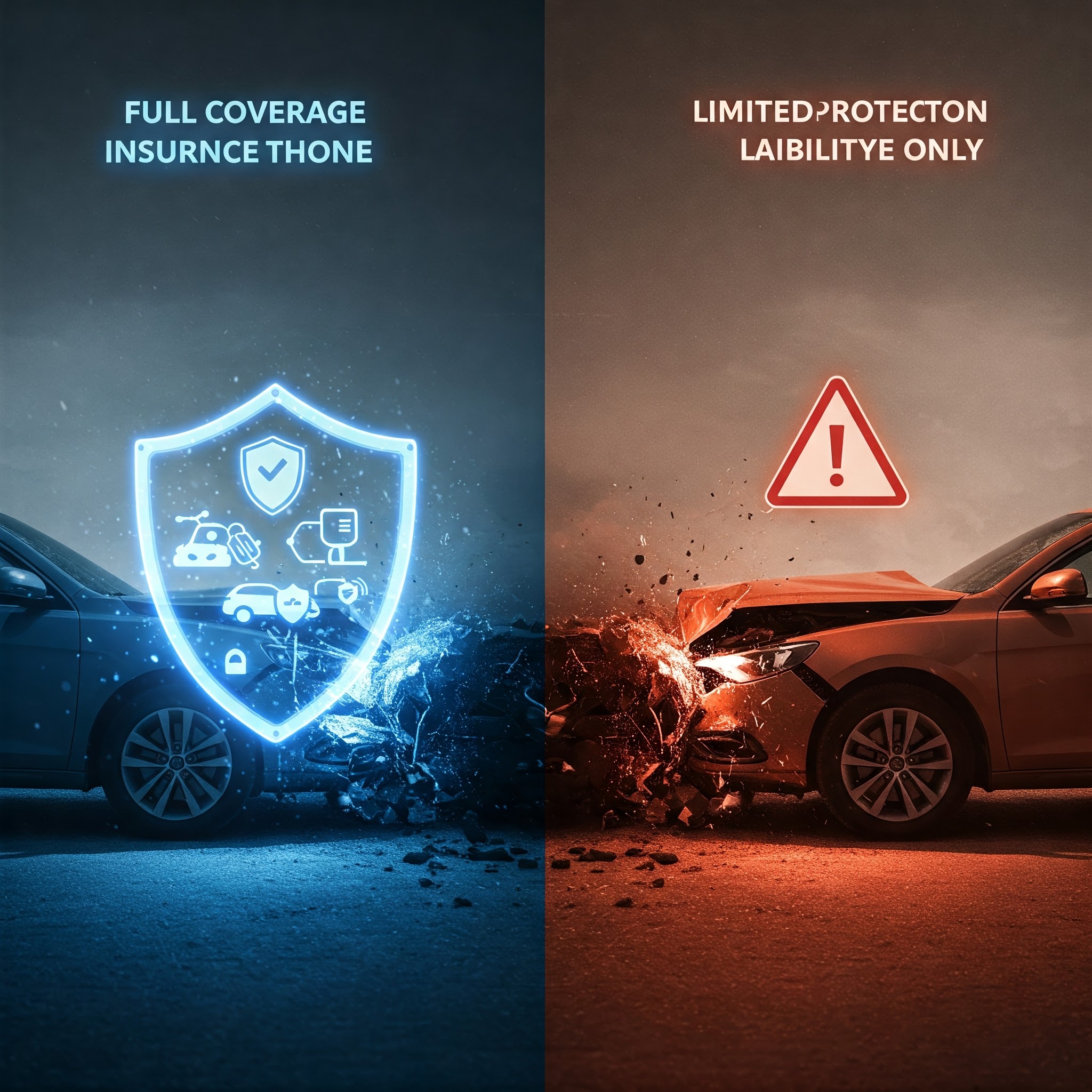Introduction
When shopping for auto insurance, you’ll often come across two main types: full coverage and minimum coverage. But what do these terms mean, and how do they affect your protection on the road? Choosing the right insurance can make a huge difference in your financial security and peace of mind.
In this guide, we’ll break down the key differences between full coverage and minimum coverage auto insurance. We’ll also discuss their benefits, common challenges, and expert tips to help you decide which option suits your needs best.
Understanding Full Coverage and Minimum Coverage
What is Minimum Coverage?
Minimum coverage auto insurance is the least amount of coverage required by law in a given state. It usually includes:
- Liability Insurance (Covers damages and injuries you cause to others)
- Personal Injury Protection (PIP) or Medical Payments (Covers your medical expenses in some states)
- Uninsured/Underinsured Motorist Coverage (Covers you if the at-fault driver has no insurance)
This type of coverage ensures you meet the legal requirements to drive but offers limited financial protection.
What is Full Coverage?
Full coverage is a more comprehensive insurance option that includes:
- Liability Coverage
- Collision Coverage (Pays for damage to your car from an accident, regardless of fault)
- Comprehensive Coverage (Covers non-collision incidents like theft, vandalism, or natural disasters)
Full coverage provides greater financial security but comes at a higher premium.
Key Benefits of Full Coverage vs. Minimum Coverage
1. Financial Protection
- Minimum coverage only pays for damages to others, leaving you responsible for your own repair costs.
- Full coverage protects your vehicle, even if the accident is your fault.
2. Peace of Mind
- With full coverage, you won’t have to worry about out-of-pocket expenses after an accident.
- Minimum coverage may leave you financially vulnerable if damages exceed policy limits.
3. Loan and Lease Requirements
- If you’re financing or leasing a car, lenders often require full coverage.
- Minimum coverage is typically only allowed if you own your vehicle outright.
4. Coverage for Non-Collision Incidents
- Comprehensive insurance covers theft, natural disasters, and vandalism.
- Minimum coverage does not protect against these risks.
How to Choose Between Full Coverage and Minimum Coverage
Step 1: Check State Requirements
- Each state has different minimum insurance laws.
- Research your state’s requirements before making a decision.
Step 2: Assess Your Vehicle’s Value
- If your car is worth less than $5,000, minimum coverage may be enough.
- A new or expensive car benefits from full coverage.
Step 3: Consider Your Financial Situation
- Can you afford to repair or replace your car if an accident occurs?
- If not, full coverage is the safer choice.
Step 4: Compare Insurance Quotes
- Get multiple quotes to find the best rates.
- Bundling policies (like home and auto) can save money.
Step 5: Look for Discounts
- Many insurers offer discounts for safe driving, multiple policies, and good credit scores.
Common Problems & Solutions
Problem 1: High Premium Costs
- Solution: Increase your deductible to lower your monthly premium.
Problem 2: Confusing Insurance Terms
- Solution: Ask your insurance provider to explain policy details in simple terms.
Problem 3: Not Enough Coverage in a Major Accident
- Solution: Consider higher liability limits and full coverage for maximum protection.
Problem 4: Difficulty in Switching Policies
- Solution: Compare quotes online and switch during your renewal period to avoid fees.
Future Trends in Auto Insurance Coverage
- Usage-Based Insurance: Companies are using telematics to offer discounts for safe driving.
- Pay-Per-Mile Insurance: Low-mileage drivers can save money with pay-as-you-go plans.
- AI and Automation: Claims processing is becoming faster with AI-driven evaluations.
- Climate Change Considerations: More insurers are adapting policies for extreme weather coverage.
Conclusion & Final Thoughts
Choosing between full coverage and minimum coverage depends on your needs, budget, and risk tolerance. If you have an older vehicle and a tight budget, minimum coverage may suffice. However, if you want peace of mind and financial security, full coverage is a better option.
Before making a decision, compare multiple policies, understand state laws, and assess your personal financial situation. Insurance isn’t just about meeting legal requirements—it’s about protecting yourself on the road.
Do you prefer full coverage or minimum coverage? Share your thoughts in the comments!
FAQs
1. What is the main difference between full coverage and minimum coverage?
Full coverage includes liability, collision, and comprehensive insurance, while minimum coverage only meets state legal requirements.
2. Is full coverage worth it for an older car?
If your car is worth less than $5,000, minimum coverage may be sufficient.
3. How can I lower my full coverage insurance costs?
Increasing your deductible, maintaining a good credit score, and bundling policies can help reduce costs.
4. Does minimum coverage protect against theft or natural disasters?
No, only comprehensive coverage (part of full coverage) covers these incidents.
5. Where can I compare auto insurance quotes?
You can compare quotes on websites like Geico, Progressive, and State Farm.
